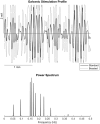Development of a ground-based sensorimotor disorientation analog to replicate astronaut postflight experience
- PMID: 38699143
- PMCID: PMC11063268
- DOI: 10.3389/fphys.2024.1369788
Development of a ground-based sensorimotor disorientation analog to replicate astronaut postflight experience
Abstract
The perceptual and motor coordination problems experienced following return from spaceflight reflect the sensory adaptation to altered gravity. The purpose of this study was to develop a ground-based analog that replicates similar sensorimotor impairment using a standard measures test battery and subjective feedback from experienced crewmembers. This Sensorimotor Disorientation Analog (SDA) included varying levels of sensorimotor disorientation through combined vestibular, visual, and proprioceptive disruptions. The SDA was evaluated on five previously flown astronauts to compare with their postflight experience and functional motor performance immediately (Return (R)+0 days) and +24 h (R+1) after landing. The SDA consisted of galvanic vestibular stimulation (GVS), visual disruption goggles, and a weighted suit to alter proprioceptive feedback and replicate perceived heaviness postflight. Astronauts reported that GVS alone replicated ∼50-90% of their postflight performance with the weighted suit fine-tuning the experience to replicate an additional 10%-40% of their experience. Astronauts did not report feeling that the disruption goggles represented either the visual disruptions or illusory sensations that they experienced, nor did they impact motor performance in postflight tasks similarly. Based on these results, we recommend an SDA including the GVS and the weighted suit. These results provide a more realistic and portable SDA framework to provide transient spaceflight-relevant sensorimotor disruptions for use in countermeasure testing and as a pre-flight training tool.
Keywords: disorientation; functional performance; sensorimotor system; spaceflight analog; vestibular system.
Copyright © 2024 Moudy, Peters, Clark, Schubert and Wood.
Conflict of interest statement
SM was employed by Aegis Aerospace, Houston, TX, United States. BP was employed by KBR, Houston, TX. The remaining authors declare that the research was conducted in the absence of any commercial or financial relationships that could be construed as a potential conflict of interest. The author(s) declared that they were an editorial board member of Frontiers, at the time of submission. This had no impact on the peer review process and the final decision.
Figures


References
-
- Bles W., De Graaf B., Bos J. E., Groen E., Krol J. R. (1997). A sustained hyper-g load as a tool to simulate space sickness. J. Gravitational Physiology 4, P1–P4. - PubMed
LinkOut - more resources
Full Text Sources

